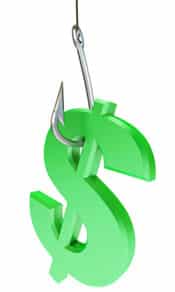 Query letter sample (below) reveals how you can double your chances of getting the attention of book agents and publishers. This article is part of a series called Get a Literary Agent.
Query letter sample (below) reveals how you can double your chances of getting the attention of book agents and publishers. This article is part of a series called Get a Literary Agent.
Before I share the ideal structure for book queries with you, I need to make sure you understand something.
Publishing agents have to write query letters, too.
That’s how they sell books.
The only difference is that book agents first meet with publishers (or call them on the phone), to tell them what a book is about and get permission to send it. Then they mail, email, or messenger the book to the publisher.
With a cover letter.
So, although I’ve read more than 60,000 queries, and listened to thousands of pitches face-to-face at writers’ conferences, I’ve also written tons of queries.

And… the query letter sample structure below is what I used to get book deals with houses like: Simon & Schuster, St. Martin’s, Hyperion, Prentice-Hall, Workman, Andrews-McMeel, Entrepreneur, Barron’s, Amacom, and more… resulting in millions of books being sold, as well as works being picked up for TV, stage, and feature film (with companies like Paramount Pictures and DreamWorks).
This query letter sample structure works.
Scroll below to learn more about the query letter sample structure that you can use to get literary agencies fighting over the chance to represent you and your book.
* * *
Query Letter Sample – The Epiphany
The query letter sample structure I’m about to show you isn’t like anything you’ve seen before. In fact, you won’t find this query letter sample structure in any book or other online resource.
It’s cutting edge.
Most of the information published about queries (in books and online) is inadequate (it’s not completely wrong, but it only paints half the picture). In other words, if you follow that advice, your pitch letter will only be half as good as it could be.
And that means you’re twice as likely to get a rejection letter.

The reason there’s so much misinformation out there, is that most publishing professionals (for some strange reason that I still haven’t figured out yet), don’t think of the query letter as a miniature (or shorter) version of the book proposal.
But they should, because that’s really what it is.
Book proposals contain every bit of information that a book agent and/or publisher needs to understand what a project is about (and determine its value). That information is neatly divided into four critical categories. And those categories are the foundation of my ideal query letter sample structure.
So, let’s take a look at the four sections of the perfect
query letter sample structure.
* * *
Recommended Query Letter Sample Structure
The main difference between this query letter sample outline (and the format you’ll see taught by others) is that most people suggest your letter only have three sections. But the ideal query letter sample structure is made up of four sections. I say sections instead of “paragraphs” because sometimes one section might consist of more than one paragraph.

Section One – Query Letter Sample
Introduce Your Book and the Target Market
The first section in my query letter sample outline is for you to explain what your book is about. It should include your title and/or subtitle, name the genre or category of your book, and indicate the word count. If you have a high-concept hook or “logline” for your book, it should appear at the beginning of this section. This section is also where you should specify your target market and make any observations that you’ve made about the market.

If your book has already been self-published, represented by another publishing agent, or reviewed by publishers, you should say that as well. This section of my query letter sample outline is also where you might want to explain the story and/or inspiration behind your book, and indicate whether your manuscript is a stand-alone book and/or part of a series.
* * *
Section Two – Query Letter Sample
Compare and Contrast Your Book with Other Titles
This second section in my query letter sample outline is usually the hardest to write. That’s because most authors are a lot more knowledgeable about their own book than they are their competition. Then there’s the fact that most authors don’t want to acknowledge they have competition, or that “similar” books have already been published.

Even if you’ve written something completely unique, you still need to use other titles to give literary agencies and publishers some kind of context. This shows everyone reviewing your work that you’re a professional author, knowledgeable about your genre. This section of my query letter sample outline is also where you should differentiate your content and writing style from other books in the marketplace.
* * *
Section Three – Query Letter Sample
What Do Publishers Need to Know About You, Relevant to Your Book?
The third section of this query letter sample structure is designed to establish your credibility as an author, and your credibility (or potential) as a promoter. It’s basically your biography, but it should only include things that are relevant to your writing… things that will prove to literary agencies and publishers that you are the logical person to write a book like yours.
This section of the query letter sample outline is meant to include things like: previous publishing credits and/or awards; education and expertise; professional accomplishments; honors, awards, and prizes; associations, professional groups and/or other organizations that you’re part of; related volunteer, community, and business affiliations; hobbies; etc.

If you’ve attended any writers’ groups or educational retreats/events, you should mention those too. Same thing if you’ve ever worked with a professional book coach, consultant, or editor. Finally, this is the section of my query letter sample outline where you should mention any public speaking, publicity, public relations, and/or media experience that you have.
* * *
Section Four – Query Letter Sample
What Are You Going to Do to Help Promote and Sell Your Book?
The fourth section of my query letter sample outline is designed to communicate your ability, willingness, and plan to promote your work. Think of it this way, there are three types of content that end up in this section:
Statements about your willingness to promote your book
For example: “I’d be happy to do book signings and even create a website to promote my book.” That kind of statement is virtually useless because it’s just a promise that you might (or might not) follow through on.
Tentative plans to promote that you don’t have complete control over
For example: “I met [insert famous author name] at a writers’ conference last week and he said that he would give me a blurb for my book.” This type of statement is better than nothing, but it’s not nearly as good as the next kind of statement.

Confirmed plans that you have 100% control over (or almost 100%)
For example: “I have 10,000 people on my email list, 25,000 visitors to my blog every month, and 42,000 people on social media. I’m going to conduct a detailed promotional campaign to all of these people starting the 6 weeks prior to my book’s publication and then continuing during first six months after publication.” Another example: “I have blurbs from the following authors…”
Here’s one more: “Although I don’t have a large mailing list yet, one of my friends does and it’s the same target market. We have a written agreement and she’s going to send out a 6-part email campaign over 30 days to her list of 65,000 people to promote my book.” These types of statements are solid, no-fluff, no BS, concrete plans that are most likely to excite literary agents and publishers.
* * *
Conclusion – Query Letter Sample
Now, don’t freak out if you feel overwhelmed by all the information and options that I just shared, for my query letter sample structure. It’s extremely rare that an author is able to write a pitch letter that’s equally strong in all four sections of my query letter sample outline.
So…
Don’t be discouraged.

To prove my point, I’m now going to show you a query letter sample by one of my former clients that resulted in a multi-book deal with a major publisher (and more).
She didn’t do everything perfectly in her pitch letter. But, what she did do, she did extremely well. And it’s probably the part that you’re going to struggle with the most. So make sure you study her example (below), and my comments.
Click here now to read the next article in this 17-part series and
see my favorite Literary Agent Query Letter Example.
* * *
* * *

